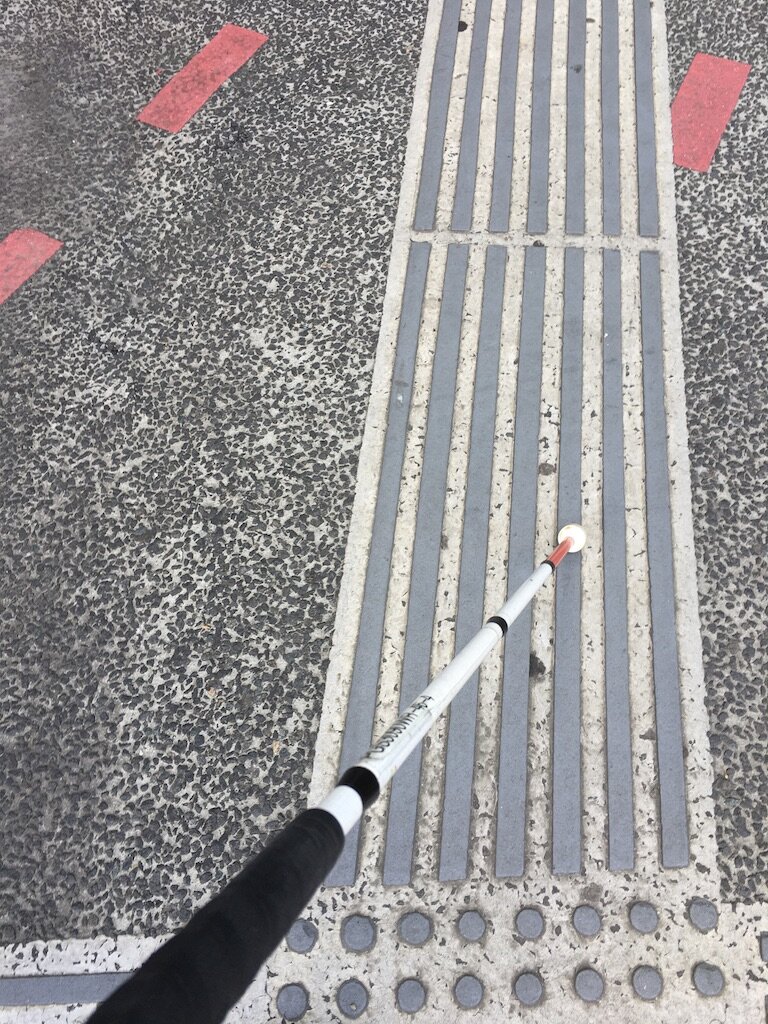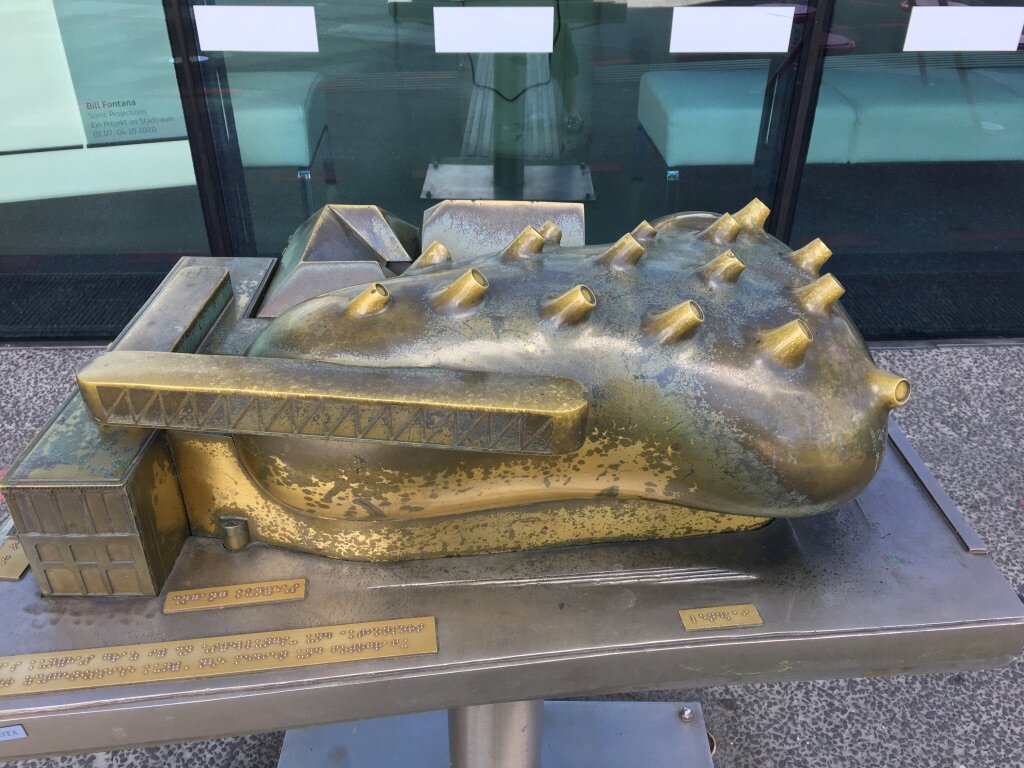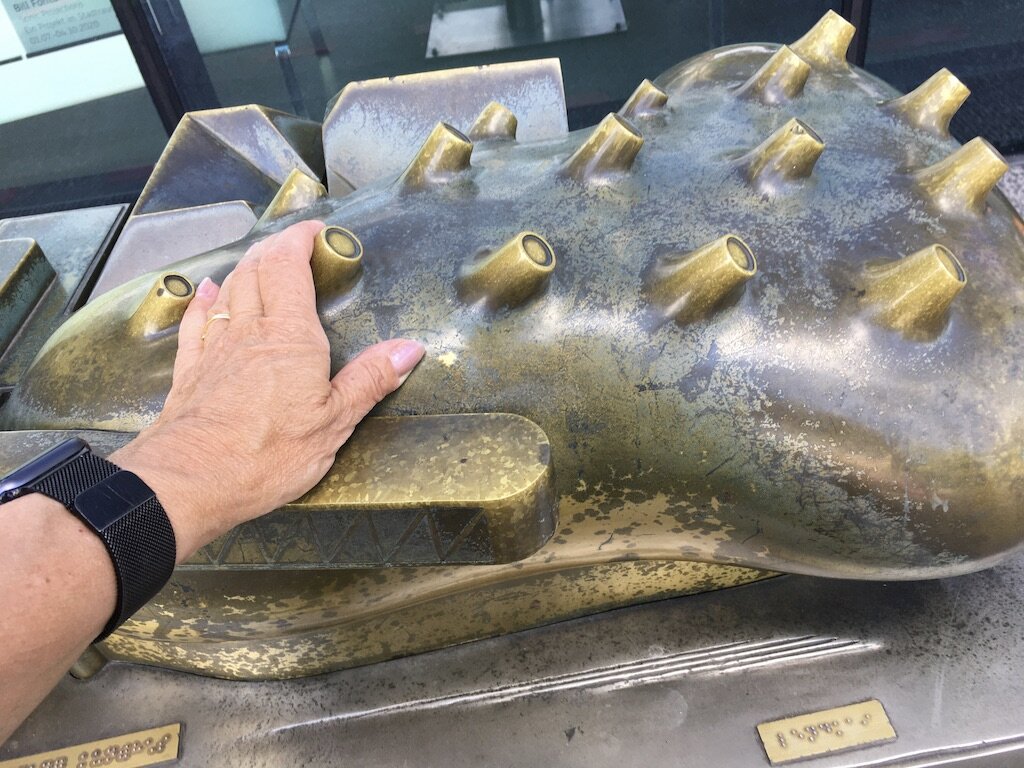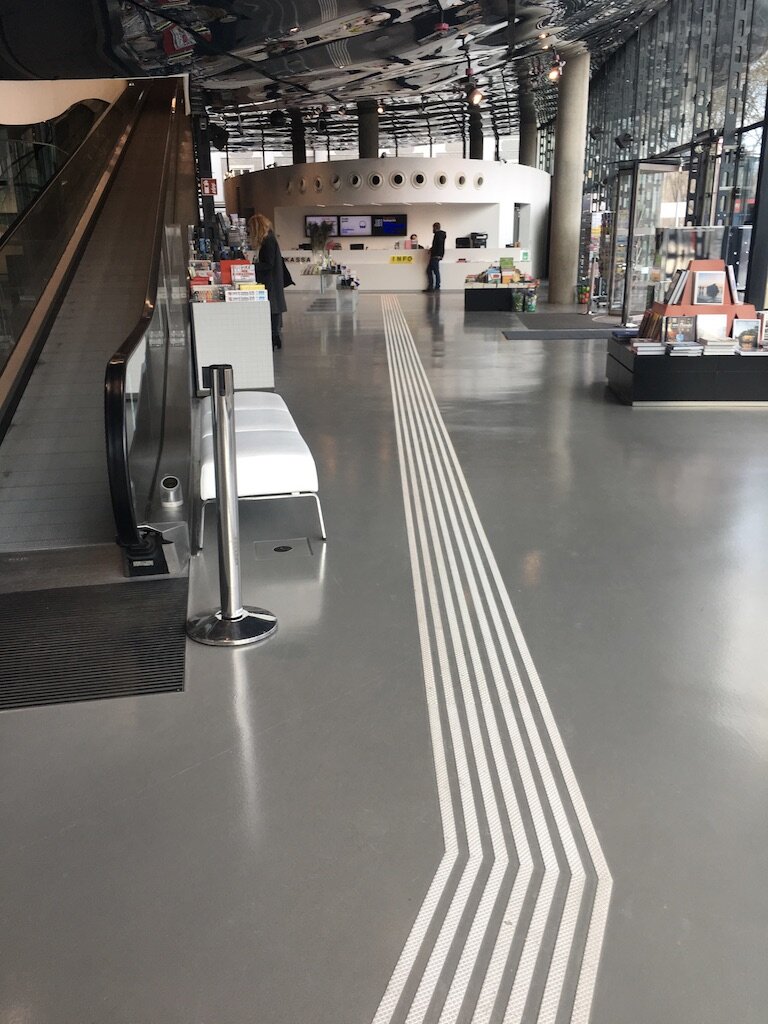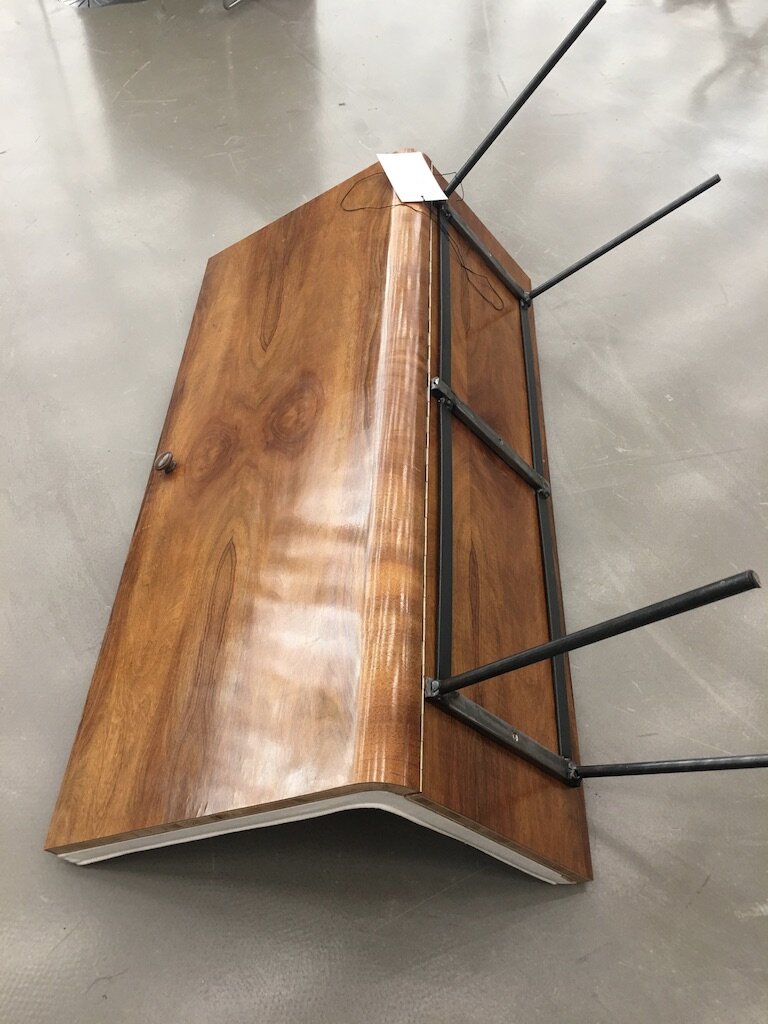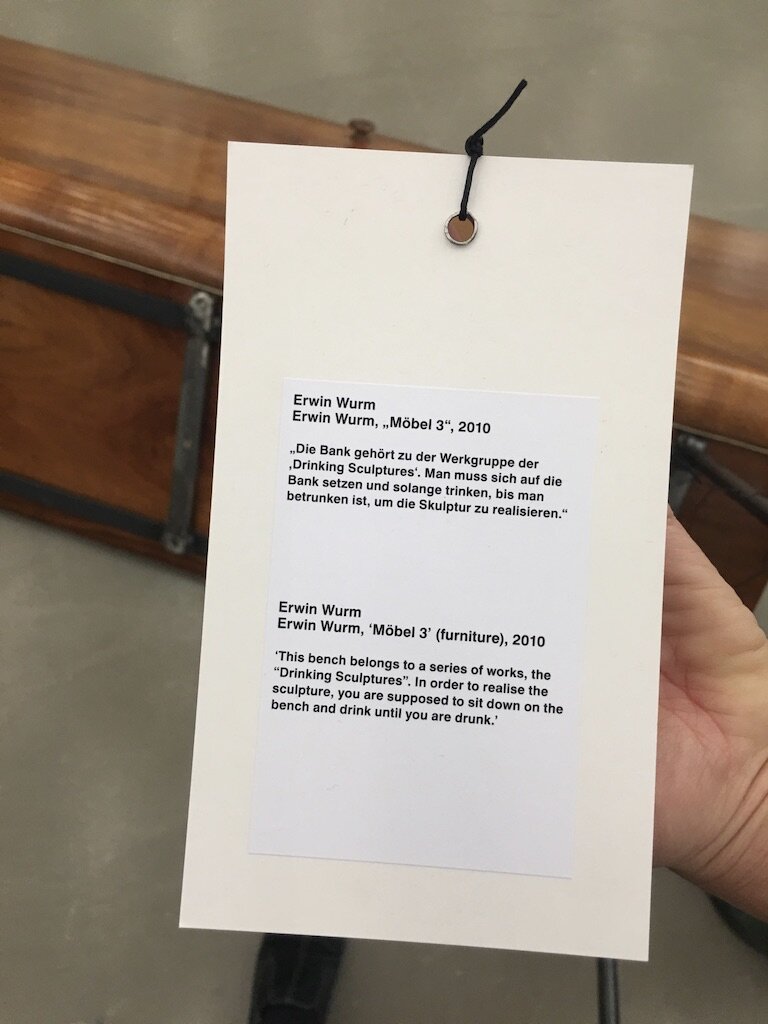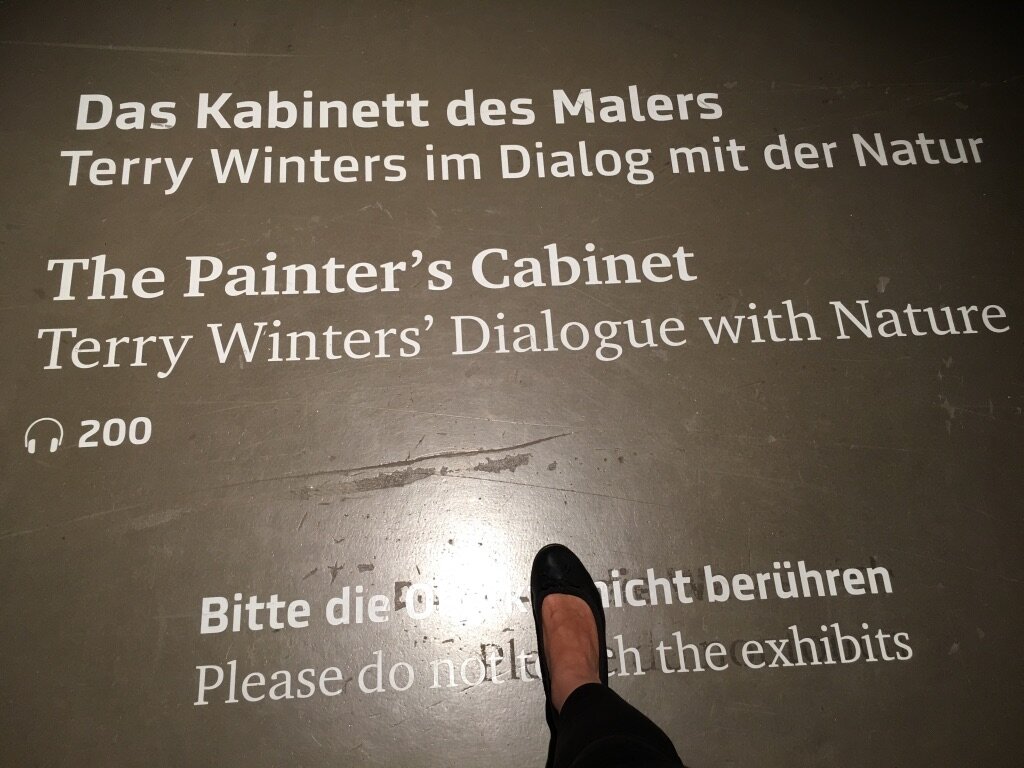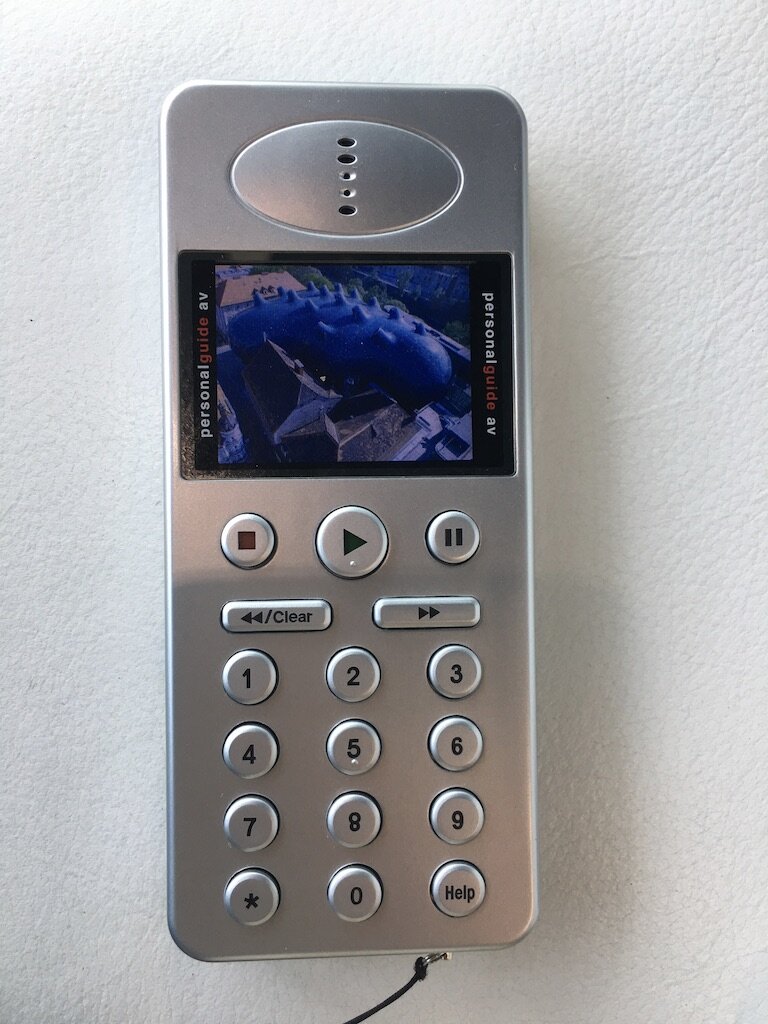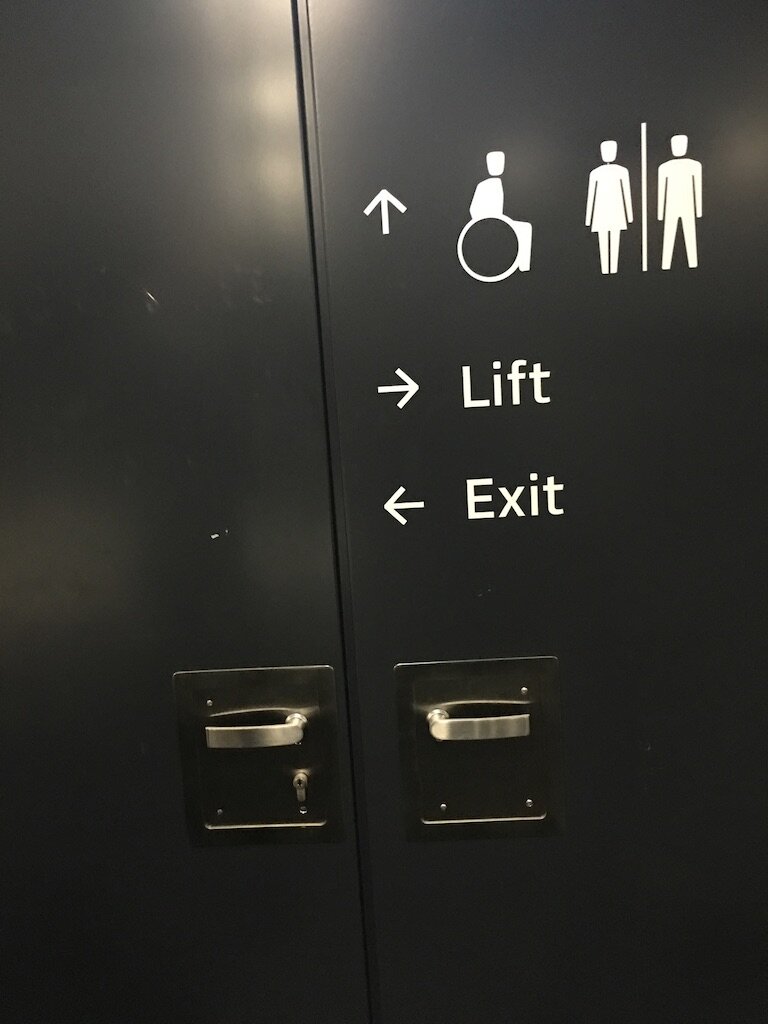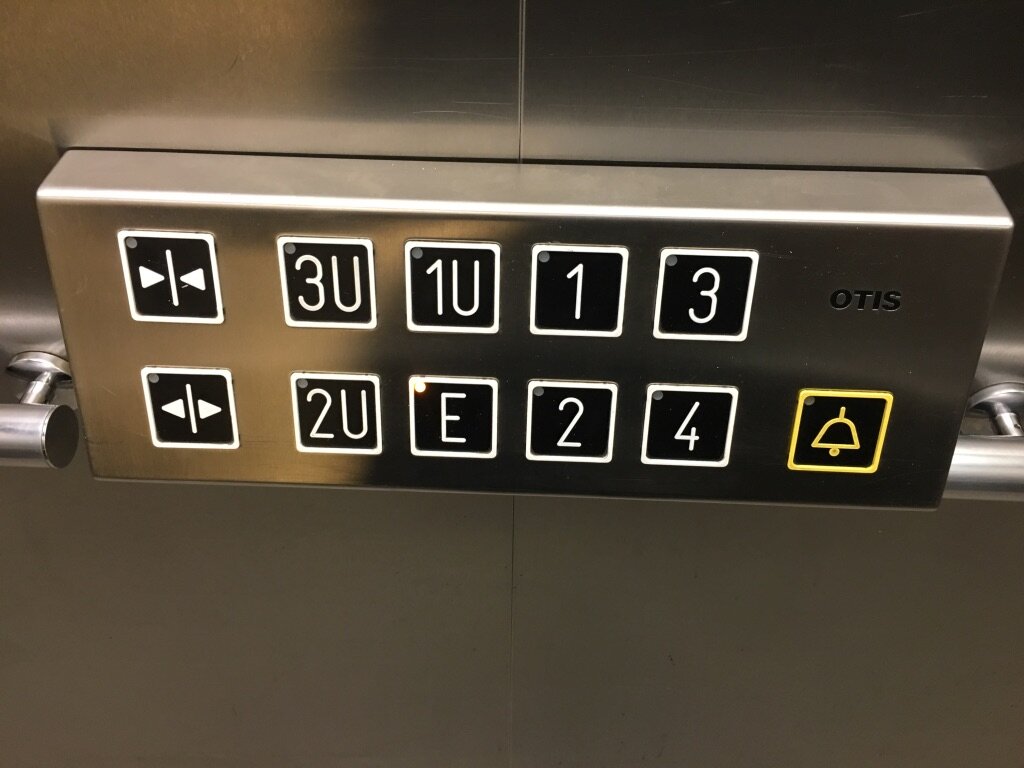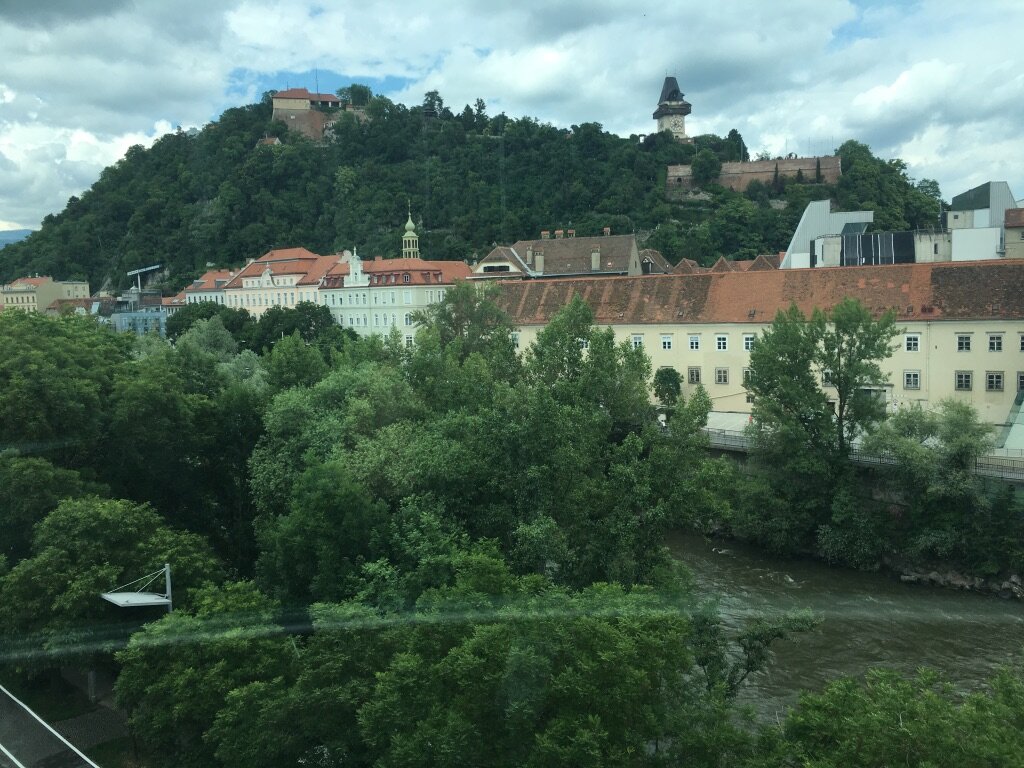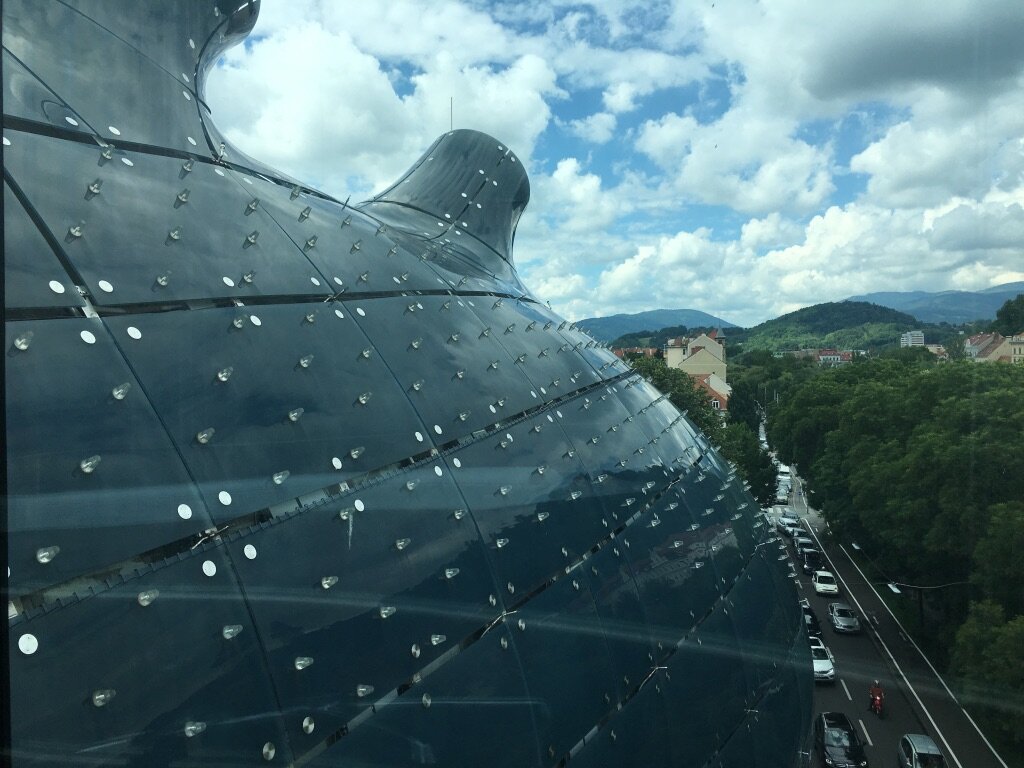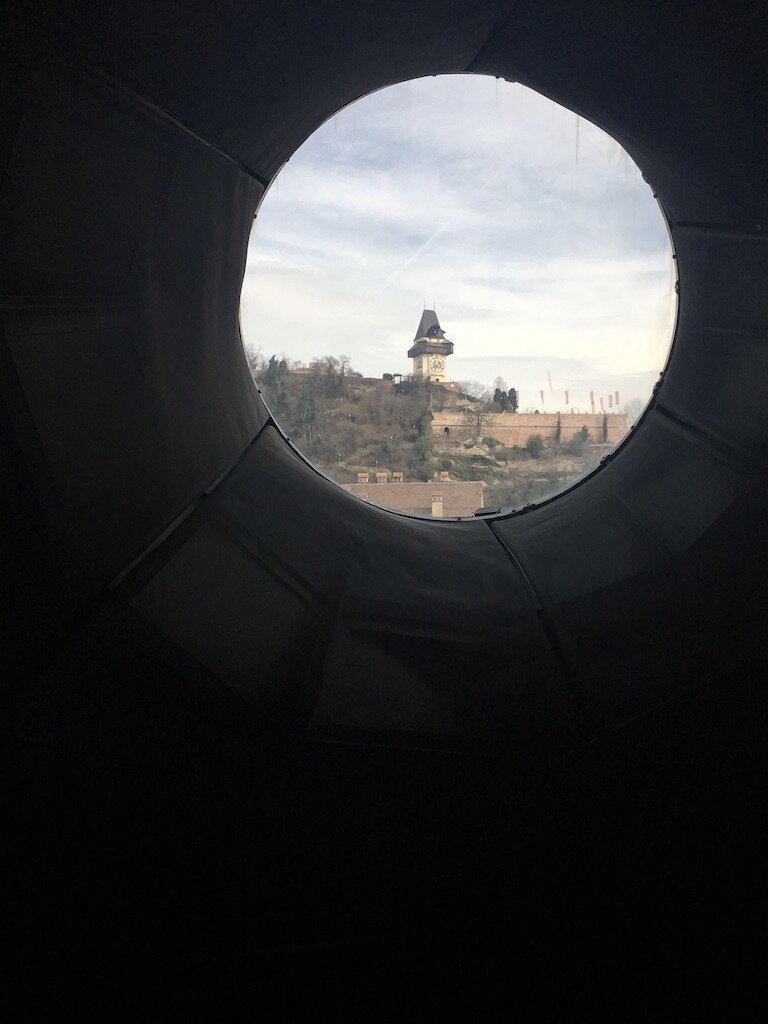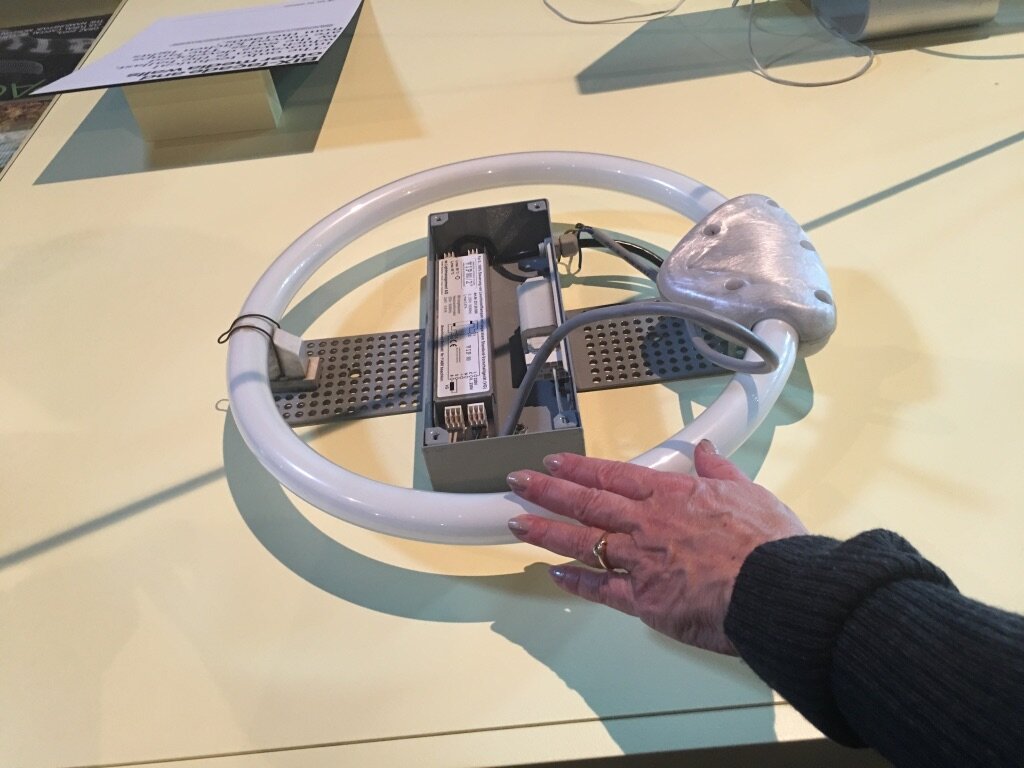Address
Lendkai 1
8020 Graz, Austria
Telephone
+43 316 8017 9200
Website
https://www.museum-joanneum.at/en/kunsthaus-graz
WHAT I LIKED: Very good accessibility features
WHAT I MISSED: An app with information about the exhibition
To read a summary of the blog, please click the IN SHORT button.
In early March of this year, museums around the world closed in response to the global spread of the coronavirus. I was “stranded” by COVID-19 in my Austrian hometown of Graz for more than four months and spent an interesting time with my family and friends through the lockdown. A few days before returning to New York, I was able to visit the Kunsthaus Graz when it re-opened in early July! What an extraordinary thing to do after such a long time of solitude. I enjoyed every moment of it.
Image: The glass paneled “bubble” from the north with some of the nozzles on top
About the Museum
Graz is the second largest city in Austria and the capital of the state of Styria. Situated on the River Mur, Graz has a beautiful historic old city. Arnold Schwarzenegger was born just outside the city and is still one of Austria’s most famous “exports.” In 2003, Graz was the Cultural Capital of Europe, and for this important event, a long-wished-for contemporary art museum was built in the heart of the city.
The museum’s unique architecture by architects Peter Cook and Colin Fournier made the building a cherished place for citizens and tourists, who lovingly call it by many nicknames; the “Friendly Alien” is the most common of them.
The building is a spectacular construction, combining one of the first cast iron buildings in continental Europe, the “Iron House,” with the glass-paneled “Bubble.” The structure is topped by the “Needle,” a recreational area and event space with magnificent views.
Within the contemporary art museum, which exhibits contemporary international artists, exhibitions change every few months and offer a wide variety of art. The building’s architecture offers an amazing exhibition space; with the application of new technology, even the façade of the bubble can be used as a multimedia canvas!
Crossing the river from the old city is the best way for me to approach the museum – I always like to view it from as many different angles as possible.
To scroll through the images, please click on the arrow on the right side of the image
Image 1: Tactile lines on the floor with my cane
Image 2: Touch model of the museum
Image 3: Touching the model
Image 4: Tactile lines guide you to the ticket counter
Entrance and Galleries
Tactile lines on the pavement for visually impaired people, spread throughout the city of Graz, lead to the museum entrance closest to the river. There, you will find a bronze model of the building to touch. The tactile model is extremely helpful, not only to our community, but also for anyone else, as the architecture is hard to understand at first, with bubbles, nozzles, glass panels, and multiple parts of the building. Give yourself some time to touch and absorb the organic forms of the “Friendly Alien”!
The tactile lines lead you through an accessible door to the ticket counter inside. I am very impressed by how much care has been taken to offer easy access for all different kinds of disabilities in this place, and I appreciate that very much.
At the ticket counter, you will find very friendly staff members to help you along. I would recommend booking a private verbal description tour beforehand, so you can experience the architecture with detailed explanations and touch objects. This is a very special treat – do not miss it!
To scroll through the images, please click on the arrow on the right side of the image
Image 1: Artwork by Erwin Wurm, Möbel 3 (2010).
Description: Bench upside down with the legs in the air
Image 2: Label to Ervin Wurm “Möbel 3”, 2010
Image 3: Entrance to an exhibition: text on the floor with my foot on it
Image 4: Oversized signage in the lobby
Image 5: Signs in the museum
Image 6: Panel in he elevator with big buttons and raised lines
Labels, Audio Guide, and App
As exhibitions at the museum change every few months, the labels change as well. I have found terrific large labels printed on the floor, big numbers for the audio guide, labels on the artwork, and many others – all of them with good contrast and size of print. The signage throughout the museum is very big and clear, which makes navigation easy. There is an audio guide to take out and an app, which gives you information about the architecture, but not the current exhibitions.
I highly recommend that you ask for a private verbal description tour. It is a thrilling experience to hear about the architecture, touch different tactile objects – including some objects in the exhibition – and learn about the different exhibitions. These tours are offered in different languages, so please don´t forget to schedule one for yourself ahead of time!
Image: Two artworks by Mike Kelley
Last, But Not Least
I really love to visit this museum because it is so well prepared for visitors with special needs, and the staff is very welcoming and helpful. The architecture outside and inside always gives me something new to explore – and the view through the nozzles and from the upper part of the “The Needle” to the city center are breathtaking!
To scroll through the images, pleas click on the arrow on the right side of the image
Image 1: View from the “Needle” of Graz’s landmark building the “Uhrturm” on top of the
Schlossberg
Image 2: View from the “Needle” to the “Nozzles” on the roof
Image 3: View from inside one of the nozzles of the “Uhrturm” (Clocktower)
Image 4: Touch object: light installation at the inside of the nozzles


